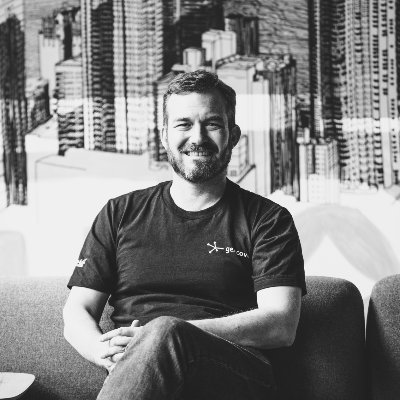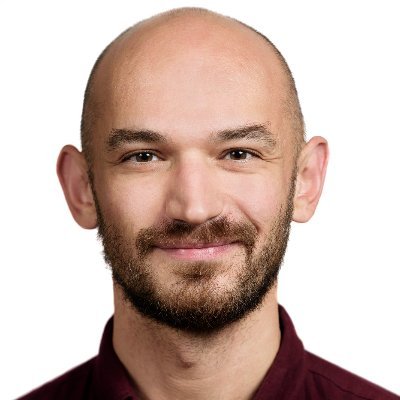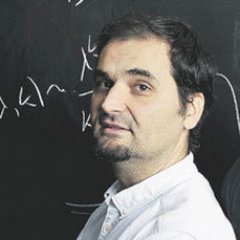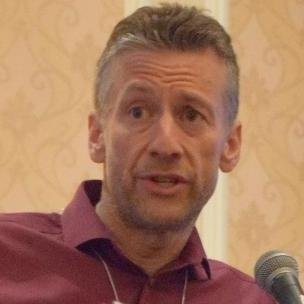
Shyam Prabhakar Lab
@shyam_lab
Followers
2K
Following
1K
Media
108
Statuses
1K
Associate Director Spatial and Single Cell Systems @astar_gis. Genomics: algorithms, disease markers & mechanisms, genetic diversity [email protected]
Singapore
Joined November 2019
Want to join a global consortium using #singlecell technologies to understand human diversity? Are #AI and #MachineLearning your #s? Come to Singapore! We're looking for leaders to drive v1 of the Human Diversity Atlas within the #HumanCellAtlas. https://t.co/kKU1jKaA5j
0
24
75
Congrats, @Al__Forrest - this is a tour de force! Having a cleaned up database of ligand-receptor pairs is a great boost for signaling inference from omics data.
connectomeDB2025: Quality matters! ✅3,579 ligand-receptor pairs supported by 2,803 papers ✅14 vertebrates ❌ >2,900 unsupported pairs from other DBs excluded https://t.co/mY39kbjqUD
https://t.co/aBiSNWUxRx
@JARamilowski @sakura_maezono @rui_hou_ @weitao_lin @yen_yeow + team
0
3
22
A 90° flip. A delayed hardening. Two tiny tweaks in hip growth millions of years ago helped our ancestors stand tall. https://t.co/aGFS0dt0Ab
sciencenews.org
Scientists have linked bipedalism to changes in how the human pelvis developed millions of years ago.
6
8
30
Couldn’t agree more. It’s very useful to bin cellular diversity into discrete “cell types” - this helps us build mental models. But the reality is that cells exist on a phenotypic continuum.
we do not even have a concrete definition for a cell type. Cell type is a human imposed term. In many cases, cells exist in a continuum, not discrete 'cell types' per se.
2
8
60
All in all, sex-specific genetic analyses haven't led to any major discoveries yet. Despite massive differences in disease epidemiology by sex, effects of genetic variants on disease risk seem to be largely consistent between men and women.
3
6
65
Wow. 26% of MSS colorectal cancer patients showed some response to immunotherapy, and 20% had at least ten-fold reduction in tumor volume. Still Phase 2, but this could be transformative for CRC! Huge congrats to the team.
Very proud and happy to share that our work on neoadjuvant IO in pMMR colon cancers has been published online in @Nature after presentation @myESMO #ESMO25. Preview: https://t.co/KR6mBytwV3 Read on how genomic instability, P53mt and proliferation may aid in predicting responses.
2
16
90
30 million American adults and 2 million adolescents and young adults (ages 12–25) take these medications, yet their adverse cardiometabolic effects often go unaddressed by healthcare providers.
Antidepressants have a range of adverse cardiometabolic and physiologic side effects, as seen in a new systematic review of 30 such drugs https://t.co/8VxIzW8JwQ
0
2
2
A 42-country analysis of change in cancer patterns with age indicates only colon cancer is clearly on the rise in the young (age 20-49 years). Most of the rest of 12 cancer types were increasing across the age groups. AAPC-average annual percentage change https://t.co/P1gF4FWTJc
13
120
374
Emirati Genome Program: - whole genome data from 504,000 individuals - electronic health record data from 426,000 - genetically reconstructed pedigrees applied here to understanding retinal diseases https://t.co/YIjKFTVDlW
medrxiv.org
Interpreting rare variants remains a major challenge in genomic medicine, particularly for genetically and phenotypically heterogeneous disorders like inherited retinal diseases (IRDs). We introduce...
2
30
116
A newly unearthed partial fossil skeleton suggests that an extinct hominid species could have made stone tools around 1.5 million years ago. https://t.co/eQp2X5qMSo
sciencenews.org
The fossil wrist and thumb bones suggest Paranthropus boisei could grasp tools around 1.5 million years ago.
1
6
32
In science, who gets grants and pubs depends on peer review. Does reviewer diversity matter? Yes! In new paper led by @jmzumeldumlao we establish a subtle structural bias we call geographical representation bias that benefits authors from wealthier countries (1/3)
3
23
75
🌟GLOW-ing together for better gut health A*STAR Genome Institute of Singapore (@astar_gis) is partnering clinicians and scientists from Institute of Mental Health, NHG Polyclinics, Tan Tock Seng Hospital, @dukenus, National University of Singapore, Lee Kong Chian School of
a-star.edu.sg
0
1
10
Exciting work! Accurate risk prediction for common age-related diseases like CVD, stroke etc could eventually transform healthcare by enabling prevention and early detection.
Like 10day weather forecasting 10yr disease forecasting is a grand challenge in health. New work from our group combining virtually all data collectible from a person for state of the art prediction for coronary artery disease - the leading cause of death https://t.co/PrJ4BT0mv3
0
0
3
Omics showed the power of profiling many genes side by side. Same logic applies here: characterizing multiple disease models in parallel gives more precise insights. Single cell comparative organoidomics of neurodevelopmental disorders is a very promising strategy!
New preprint showing human brain organoids from our library of patient #IPSCs modeling neurodevelopmental disorders. Four major clinical classes of NDDs (MIC, EPI, PMG, ID) showed distinct scRNAseq and organoid phenotypes. https://t.co/uMlxxGmo0O
0
5
59
We are super proud of our @YaleMed and Clinical-oMx Lab @UQ_News team for our new publication in @NatureGenet titled “Spatial signatures for predicting immunotherapy outcomes using multi-omics in non-small cell lung cancer”. Let’s get into it… https://t.co/Bg5W7f1jf3
nature.com
Nature Genetics - This study uses spatial proteomic and spatial compartment-based whole-transcriptome profiling to develop predictive models for immunotherapy outcomes in non-small cell lung cancer.
4
11
57
Years ago we tried to model cancer-associated fibroblast (CAF) subtypes in vitro, but gave up because only the proliferative subtype survived culture (duh!). This study could change all that: Perturb-seq with CRISPRa of 1,836 TFs induces diverse fibroblast states in vitro(!). 👏
Fantastic work by @thenormanlab in @NatureGenet Recreating fibroblast diversity in vitro by activating transcription factors Demonstration of the power of CRISPRa Perturb-Seq to deregulate TF expression in fibroblasts (Function!) https://t.co/syQe6SbrR0
https://t.co/txlSB3LxQE
1
17
96
We’re opening several postdoctoral and scientist positions focused on RNA structure prediction and mRNA drug optimisation at the @astar_gis. If you’re passionate about AI for therapeutics — especially in areas like generative models, diffusion models, flow matching, or joint
linkedin.com
Posted 7:54:29 AM. The Genome Institute of Singapore (GIS) is the national flagship for genomic sciences, driving…See this and similar jobs on LinkedIn.
1
7
16
Finding somatic mutations in healthy tissue that can lead to cancer, at scale. Yet another path to primary prevention https://t.co/f4RnBCgZQ2
https://t.co/zbHztHzZLh
3
87
331
What if your mitochondria could leave your cell… and rescue someone else’s? (Spoiler: they can. But it’s not always a rescue.) : This blew me away. A Nature paper just showed that brown fat cells, the ones you activate with cold exposure , can export mitochondria directly into
Mitochondria move thru the body. Free mitochondria can be exported by brown fat cells into the bloodstream. From there, they transit to cells with damaged mtDNA, where they are imported and rescue mitochondrial function. The implications for cancer therapies are profound.
9
98
427
How can spatial transcriptomics achieve whole-genome coverage while maintaining single-molecule resolution without requiring sequencing?@CellCellPress @YaleMed "Sequencing-free whole-genome spatial transcriptomics at single-molecule resolution" • RAEFISH addresses the
1
9
27
























